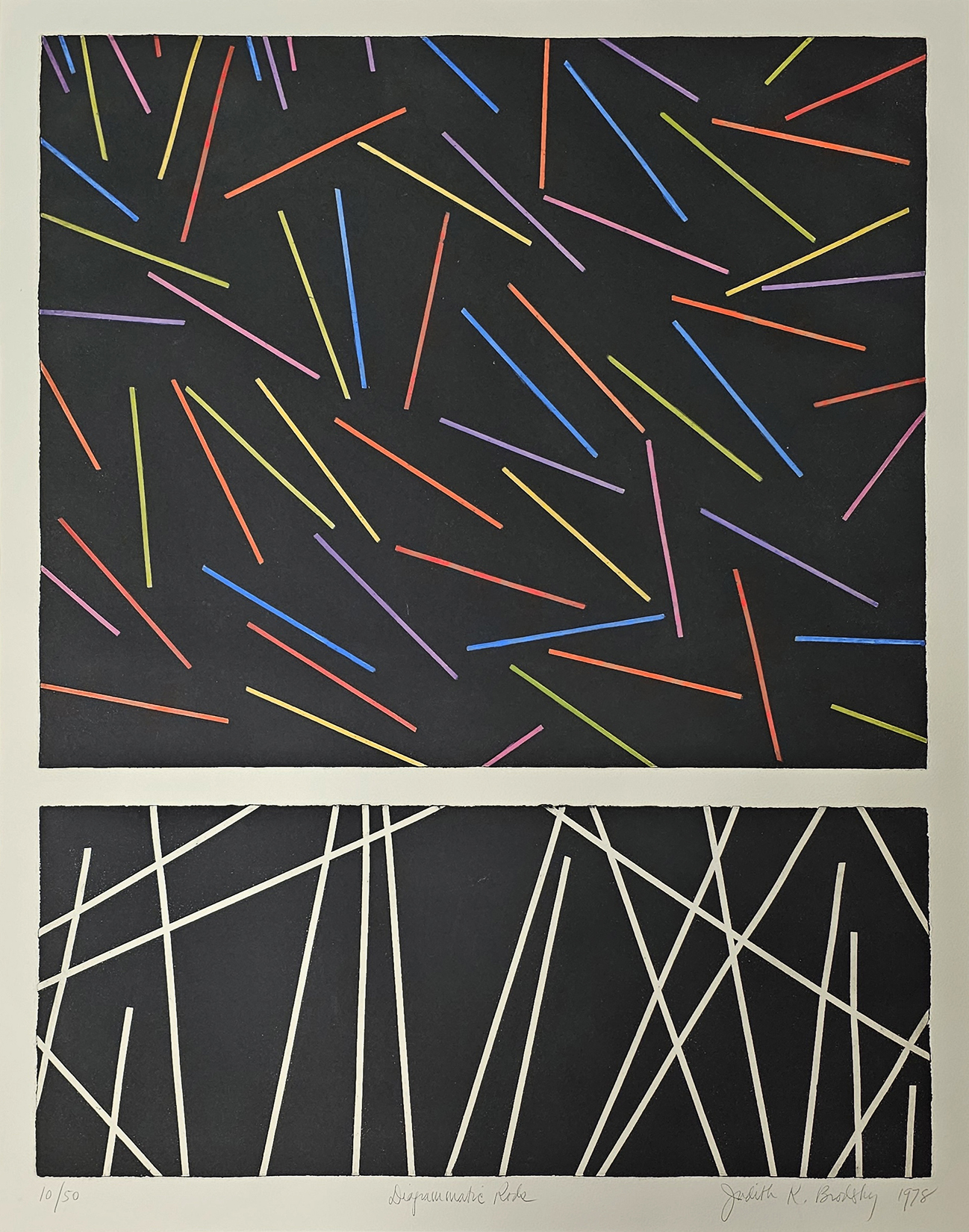TAWA at 45
The Exhibition

Judith K Brodsky
Diagrammatic Rods
hand-colored intaglio, 1975; 36″h x 24″w
Activist, artist, curator, writer Judith K. Brodsky is Distinguished Professor Emerita, Visual Arts, Rutgers University, founder of the Rutgers Center for Innovative Print and Paper, now the Brodsky Center at the Pennsylvania Academy of Fine Arts, co-founder of the Rutgers Center for Women in the Arts and Humanities, and The Feminist Art Project. The Brodsky Center, established in 1986, is known for its activist pioneer mission to further opportunities for BIPOC and non-binary artists. Over 350 artists have been in residence, 60% female-identifying, and 40% BIPOC. As a curator or co-curator, she has organized many exhibitions including The Fertile Crescent: Gender, Art, and Society (2012) and the Philadelphia city-wide print festival, Philagrafika (2010), three decades of exhibitions for the Rutgers Women Artists Series, and most recently Restoring the Art and Lives of a Circle of Five Forgotten Black Artists (2022). She is past national president of ArtTable, College Art Association, Women’s Caucus for Art, former board chair, New York Foundation for the Arts, and a former dean and associate provost at Rutgers. Brodsky writes on women artists and printmaking. Her most recent book is Dismantling the Patriarchy Bit by Bit: Art, Feminism and Digital Technology (Bloomsbury 2022). She shows how feminist art theory intersected with the rise of digital art, freeing technology from its patriarchal context. She is also a printmaker/artist with work in many museum collections including the Victoria & Albert Museum in London, which just featured her print, Dishrag Diagrammatic, in its series on objects in the museum (April 2023).
The concept for the series, “The Twenty Most Important Scientific Questions of the 21st Century” came from The New York Times article around the year 2000, in which scientists were asked to name the most pressing issues of the new millennium. The series of questions is interesting in and of itself, but also because it shows how quickly issues change. For instance, climate warming is not on the list nor is the development of AI. Their questions included what came before the Big Bang, why do we sleep, how does the brain work, what should we eat, how many body parts can be replaced, and can we live forever. Obviously, none of these are literal—they are meant to go beyond the simplicity of the question to consider the body of knowledge, the issues behind the question. One of the questions is about gender and sexual identity: whether men or women are necessary. It isn’t just a question of whether either is necessary. The question is whether it is the right question or is it a larger issue of the spectrum of sexual identity rather than the binary aspect of the question. In response to the question, Can the Genome Be Improved, I suggest that the artist and the scientist have similar thought-waves despite the difference in function between the two; the artist addresses the question through the left brain, the scientist, through the right side of the brain.
